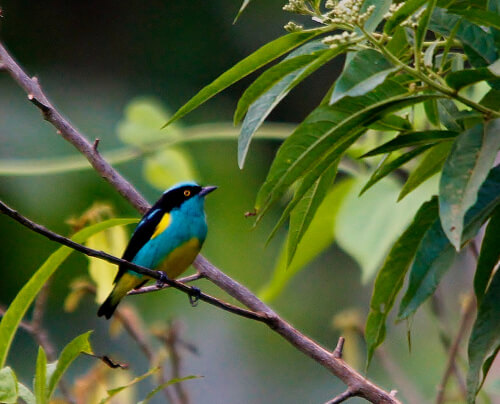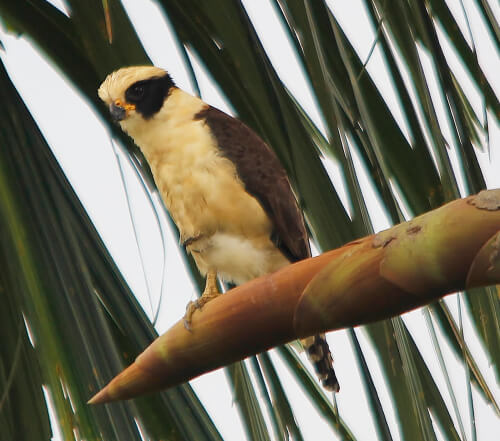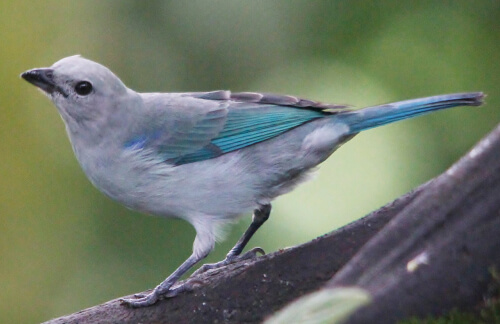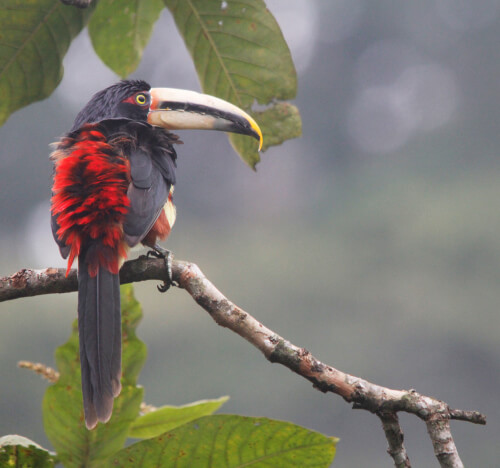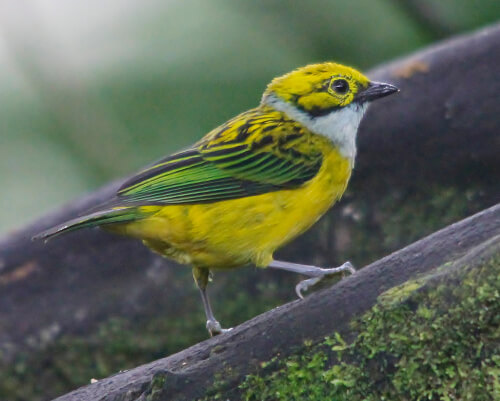Ecuador BirdBlitz Results: One Country, 11 Reserves, 620 Species, 6,865 Birds!
By Ivan Samuels and Benjamin Skolnik
During October 15-22, the Jocotoco Foundation of Ecuador embarked on its first ever BirdBlitz. Inspired by the popular BioBlitz events that have taken place in U.S. national parks, the BirdBlitz was developed as an exciting way to count birds throughout the Jocotoco reserve system while simultaneously raising funds to support the organization's critically important conservation programs.
Summary of the BirdBlitz Results:
- Total species: 620
- Total individual birds: 6,865
- Number of Jocotoco reserves: 11
And according to Benjamin Skolnik, here are some additional highlights:
- Best Bird: Pacific Royal Flycatcher
- Coolest Threatened Species Observed: 2 Ochraceous Attilas and a bunch of El Oro Parakeets
- Most Surprising Find: a flock of 30 Military Macaws, one of the largest flocks ever seen in Ecuador (and the largest ever seen in the Narupa Reserve)
- Favorite Moment: watching a sleeping Chestnut-mandibled Toucan under a leaf at night with its tail raised to avoid getting wet in the rain

In this rare photo: one of the largest flocks of Military Macaws ever seen in Ecuador! Photo courtesy of Jocotoco Foundation
The BirdBlitz was conducted much like a Christmas Bird Count or a Big Day competition. Dedicated teams composed of staff, board members, and guests covered as much ground as possible, tallying both numbers and species.
Despite the logistical challenges, all 11 Jocotoco reserves had teams on the ground. While Ecuadorian Christmas Bird Counts report impressive numbers, never before have so many incredibly diverse tropical habitats been surveyed for birds during one event – from the wet Chocó rainforests of the northwest to the dry Tumbesian forests of the south, and from the high cold Páramos of Antisana to the lush foothills of the Amazon. Together these teams covered a mega-diverse transect of biodiversity, especially within the Andes.
And the birds did not disappoint! By the time the last wet and muddy birders called it a day, 6,865 birds of 620 species had been counted! Representation by some taxa was particularly impressive, such as 57 species of hummingbirds. But the diversity of habitats represented by the reserve system ensured that an impressive majority of taxonomic groups were accounted for, from species as diverse as the Blue-footed Booby to the Jocotoco Antpitta itself.
One of the most encouraging outcomes of the event was how successful we were in finding the emblematic, threatened species that Jocotoco works so hard to protect: El Oro Parakeet (Buenaventura), Pale-headed Brush-Finch (Yunguilla), Military Macaw (Narupa), Esmeraldas Woodstar (Ayampe), Jocotoco Antpitta (Tapichalaca), and almost too many Chocó and Tumbesian endemics to mention at Canandé and Jorupe.
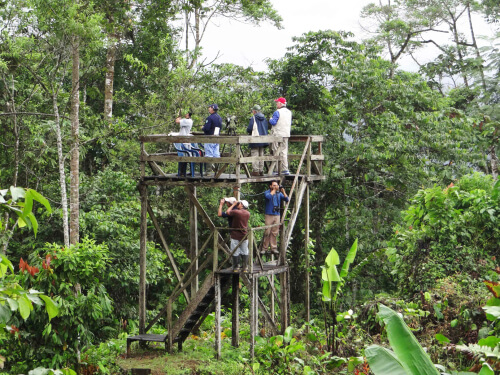
The observation platform at the Canandé Reserve was ideal for the team to scan for canopy species. Photo by Pancho Sornoza
The count also coincided nicely with migration, with both shorebirds and songbirds returning to Ecuador for the winter or passing through. The Antisana team registered an assortment of shorebirds (and a Blackburnian Warbler!) at the shockingly high elevation of 15,000 ft., while both Peregrine Falcon and Eastern Kingbird were highly unexpected at Canandé. The Narupa team was delighted to find recently returned Cerulean Warblers, a species listed as Vulnerable and a primary motivation for the creation of that reserve.
Finally, the BirdBlitz was a fantastic way for the Jocotoco Foundation and its friends to celebrate the diversity we have been working so hard to protect for 15 years. In no small way, this has allowed us to reflect on the success of the Jocotoco reserve system in conserving Ecuador's threatened bird species. Additionally, all sightings will be entered into eBird, thus contributing to citizen science at the same time.
Please help us keep this vision alive by fulfilling your pledge per species, or by making a donation to Jocotoco. Your tax-deductible contribution will directly benefit the Jocotoco Foundation by supporting the staff that steward our reserves.
Thank you for your support in helping us bring back the birds!
 Ivan Samuels lives in San Francisco where he works for the March Conservation Fund, an organization that envisions a world of healthy, resilient ecosystems that will sustain wildlife populations in the face of climate change. March Conservation Fund works to expand protected areas, support ecological research, and empower the public to become stewards and advocates for the natural world.
Ivan Samuels lives in San Francisco where he works for the March Conservation Fund, an organization that envisions a world of healthy, resilient ecosystems that will sustain wildlife populations in the face of climate change. March Conservation Fund works to expand protected areas, support ecological research, and empower the public to become stewards and advocates for the natural world.
 Benjamin Skolnik is the Director of International Program Development at American Bird Conservancy. He works with partners in Ecuador and Colombia on projects for land protection, ecotourism, and conservation birding. He also coordinates the Alliance for Zero Extinction, a global effort to curb species loss. He is fluent in Spanish and can speak basic Quechua. Benjamin lives in historic Greenbelt, Maryland with his family.
Benjamin Skolnik is the Director of International Program Development at American Bird Conservancy. He works with partners in Ecuador and Colombia on projects for land protection, ecotourism, and conservation birding. He also coordinates the Alliance for Zero Extinction, a global effort to curb species loss. He is fluent in Spanish and can speak basic Quechua. Benjamin lives in historic Greenbelt, Maryland with his family.





































